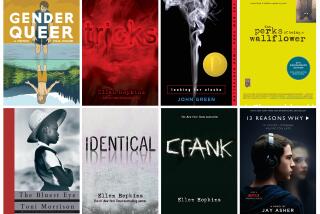Book Review: ‘Irresistible North’ by Andrea di Robilant
- Share via
It wasn’t a fascination with the sea that caused two brothers to set sail for frozen waters in Andrea di Robilant’s “Irresistible North: From Venice to Greenland on the Trail of the Zen Brothers.”
No, what prompted the Zen brothers, Antonio and Messer Niccolo, to explore the old Norse routes of the North Atlantic was a desire for adventure and wealth and a strong sense of pride for their embattled Venetian republic, whose foes at the time of their travels — the late 14th century — included the Genoese and the Turks.
Or was it all just a legend?
“Today the vast majority of geographers and historians generally assume the story is apocryphal,” says the author, “especially in northern European countries, where the mere mention of the Zen brothers can still provoke an irritated twitching of the brow.”
What first set European brows twitching was the book written by their descendant, the statesman Niccolo the Younger, in the 1500s. (Antonio was Niccolo the Younger’s great-great-great grandfather.) His book possesses one of those long titles that, however unwieldy, retains a certain grand sound that’s absolute poetry for a lover of antique books:
“On the Discovery of the Islands of Frislanda, Eslanda, Engrovelanda, Estotilanda and Icaria made by two Zen brothers under the Arctic Pole.”
Di Robilant stumbled upon the book because of an American, a stranger, whom he helped to find the crumbling palazzo of the Zens, a distinguished, old Venetian family. His curiosity piqued, Di Robilant examined a copy of the book that included a “carta da navegar,” a nautical map, of the region that offered a vague resemblance — a distorted one — of the actual place as it appears on an atlas today. For a writer like Di Robilant, who has excavated marginal lives in his other books (“A Venetian Affair,” “Lucia”), this was all he needed to launch a full-scale inquiry.
His book is a captivating work of recovery. At first, it seems that it will remain a bookish one — that the only travels he’ll be making are to archives and libraries around Venice. But then, Di Robilant abandons his study carrel for planes, boats and ferries so he can see the places the Zen brothers may have seen.
“May have seen” is a necessary qualification, because the places are hidden, not only by distortions on the map in Niccolo the Younger’s book but also by other names. Frislanda, Di Robilant suggests, is a distortion of the Faroe Islands, a contraction and Italianizing of “the old Viking name from Faeroeisland to Frislanda.”
Di Robilant has a flair for the evocative detail (Venetian ships, for example, “left such a profusion of pungent aromas in their wake at sea that they could be detected miles away given the right wind”). His willingness to travel to places far off the beaten path enlivens his account, giving it forward momentum as he grounds the Zen brothers’ travels in the real world, despite criticisms that the travels are a mere “tissue of fiction.” His conclusion is that Niccolo the Younger was “a first-class muddler” but not “a fablemonger.” However, as with the best stories about heroic, improbable lives, readers are left to draw their own conclusions.
More to Read
Sign up for our Book Club newsletter
Get the latest news, events and more from the Los Angeles Times Book Club, and help us get L.A. reading and talking.
You may occasionally receive promotional content from the Los Angeles Times.






